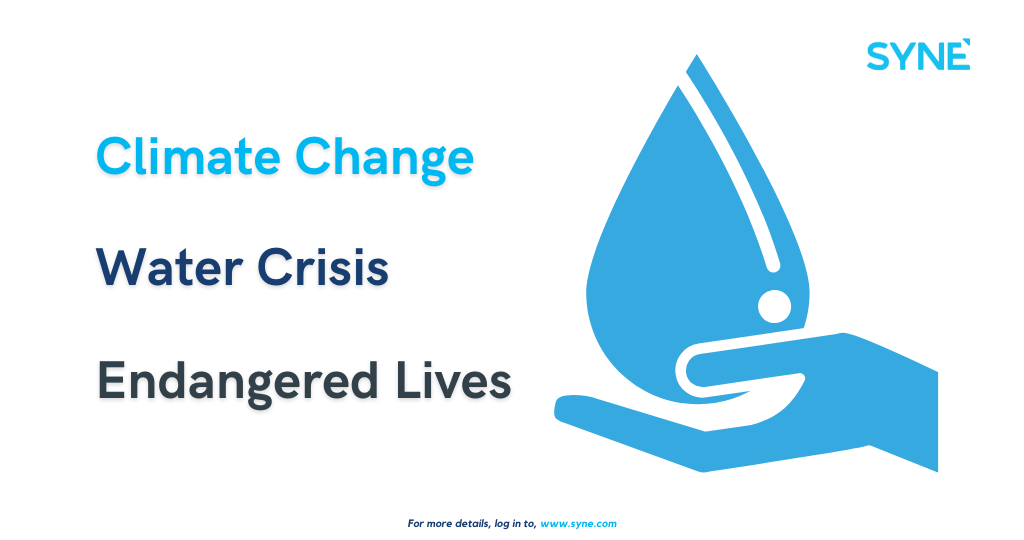Climate Change; Water Crisis; Endangered Lives
Environment
CREATED
02 Mar 2022
syne.com/story/climate-change-water-...
Water encompasses approximately 70.9% of the Earth's surface, mostly in seas and oceans, present in many forms - groundwater, glaciers, ice caps, vapour, and others. It plays a vital role in the world economy, with approximately 70% of the freshwater used by humans is for agriculture. However, our current world faces severe water scarcity to a degree that we have never seen before.
Water scarcity is the lack of water or the lack of access to safe water. It is also defined as an economic scarcity that occurs when despite water resources available, the country does not possess the necessary wealth and/or infrastructure while physical scarcity is where there is a lack of water due to environmental pollution, declining groundwater levels, and others.
Few of the major causes of climate change such as higher temperatures, and unpredictable weather patterns, affect the availability and distribution of rainfall, river flows and groundwater, and further deteriorate the water quality. Due to the deterioration of water quality, the prevalence of diseases such as cholera and other water-borne illnesses are on the rise. Through analysing the current consumption rate, the situation would worsen. Apart from this, due to climate change, more floods and severe droughts are predicted as well. The low-income communities are the most vulnerable to any threats to water supply and are the most affected by the water crisis currently.
Changes in water availability will also impact health and food security. These have proven to trigger refugee dynamics and political instability. The United Nations stated that by 2050, the number of people at risk of floods will increase from its current level of 1.2 billion to 1.6 billion. In the early to mid-2010s, 27% of the global population, lived in potential severely water-scarce areas.
Sustainable Development Goal 6 is, ‘Clean Water and Sanitation’ and is especially important since it is essential for public health and boosts countries’ economic growth. It is indeed no surprise that exists a significant divide regarding access to water-based on geographic location, economy, locale, and others.
So, what shall we do to survive this water crisis? We need to work together by reducing water wastage as well as finding innovative cost-efficient solutions to create more safe drinking water. For instance, agricultural production can be substantially increased with much lower water requirements, while domestic and industrial wastewater can be collected, treated, and reused. Such solutions would create a virtuous cycle that will increase food security and reduce tensions between communities around water. Apart from this, we must scale up work to enhance the management of water resources in the most vulnerable places and communities.
We can also work at increasing investment in climate adaptation, including measures to enhance integrated water management in the world’s water stress hotspots such as the Middle East, the Mediterranean Basin, and South Asia. As the Secretary-General told the Security Council in September, “we need a breakthrough on adaptation and resilience.”
What do you think are the ways to provide safe drinking water in your community? Please mention this in the comments.




View Comments